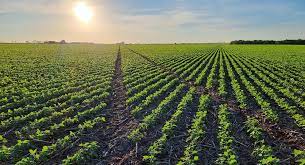Hello,
I would like to check if anyone has seen a topic or knows how it is possible to record the trajectory of the tractor traveled during spraying, so that when planting with the planter, the automatic shutdown of the sections where the tractor passed previously during spraying is done. .
That way after you have to spray again, the plants won’t be crushed.
As you can see in the image.

Basically that would be tram lines. I don’t think there is a feature for tramlines at a different angle than the line of travel.
I cannot understand what the reference to the planter means here? Is the intention to record a path including headland turns? If not, a new AB-line should be enough. Section control would take care of the sprayer either way, following the planter waylines or driving in an angle.
OP wants to seed angled tramlines using row clutches on the planter, so that the result of the planter pass looks like the image.
He wants the tramline definition to come from a recording. I don’t think this part really matters. If you could input a heading, wheel spacing settings, and an AB line for the tramlines that should be fine?
You’d have to automatically generate a boundary of the wheel tracks somehow.
The intention is to save the entire route that the tractor wheels will make during spraying, including maneuvers and headlands.
In this way, when planting is carried out, the section of the planter that passes over the tractor wheel that sprayed is automatically turned off.
With this function, after the plants are born and during their development, every time the spraying has to be done, the tractor will go through the same path where the section was turned off and the pantio was not carried out, preventing the plants from being crushed, harming the production or be killed.
Would it not make more sense when planting to be able to say “make tramlines for A+ heading at this point at this angle, for 90’ boom, for 120” wheel spacing, for 15” tires, with a 90’ headland.
And then the planter does what it needs to do without any recording ahead of time.
When it’s time to spray you just use the same A+ line.
That gives you the ability to plant before spraying.
Why do you want to record first?
If you record first then aren’t you going to have weird recording artifacts? Like any cross track error or auto steer disengagements will be captured in the seeding. Turns wouldn’t be pretty.
It would be similar to image painter if you could just enter in the critical information without recording. That would make it easier to test. Everything happens in the same field file instead of two field files.
Still no contribution to the issue but I start to understand the scenario. Now I’m wondering what is the reason to spray on an angle to the AB-lines for seeding/planting?
Farming scenarios are so different around the world. A side effect of the forum is learning (slowly) these small regional habits.
I’m new to using AgopenGPS, maybe I don’t know how to use a function correctly.
The problem is that the planting areas are not always symmetrical to use exact numbers, especially in small areas, making the tractor have to make a lot of movements during spraying and planting.
The idea of recording the spray first is to have the exact path of where the tractor went.
If something is difficult to understand, it’s because I’m using a translator.
Tramlines can be a partial solution.
Maybe I couldn’t express myself correctly, but there’s no need to plant or spray at an angle, the only objective is not to carry out the planting where the sprayer wheels will pass.
This could be one possibly.
Tram lines is another.
A simple hack would be the following:
If starting planting, run diagonally with sections turned on at just the wheels. That will create diagonal lines that the autosections will skip. This field would need to be saved as a default. Open a new field based on this default, set your ablines and if you drive slow and your sections are small enough, it will skip what is already “painted”. You can even change the colors.